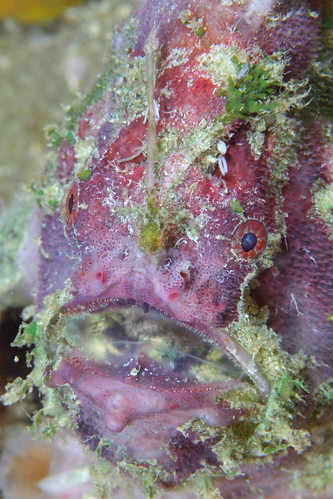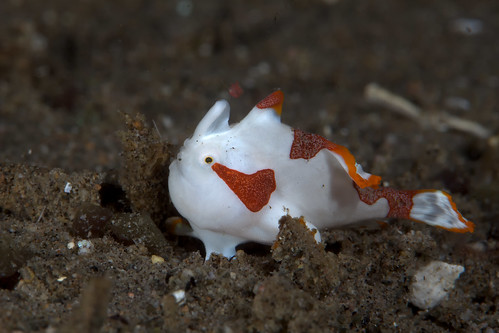Praise to the Filipino Critter Spotter
If you have been admiring underwater photographs from the Philippines, you probably have a rough idea what it takes to get a good shot of some marine critter: half a boat-load full of diving and underwater camera gear; a skill set-which includes good buoyancy, fining and some photographic talent; and a critter to photograph! But how do we find these?
Here the Filipino Critter Spotter comes in: A seasoned reef professional. A man who knows his way around between the corals. An expert in finding the harlequin shrimp, leaf scorpionfish, Randall’s shrimp goby and Allen’s ceratosoma. A master in frogfish-detection. It’s the Filipino Critter Spotter who spots most of the critters which then end up on Facebook underwater photo groups, gallery walls or in photo books.
Visiting underwater photographers would go home with much less awe-inspiring images of underwater life if not for the Filipino Critter Spotter. There would still be shots of “Nemo” and of pretty sea fans, but certainly less photographs of the rare, tiny and semi-cryptic fishes, nudibranchs, crabs and shrimp. A hairy shrimp the size of a large sand grain? The Critter Spotter finds it. You are hoping to see a mimic octopus or a stargazer? Just ask your Spotter.
Even I, as a very critter-savy inhabitant of the Pacific shores since 2002, still value the knowledge of the Critter Spotters. When I come to a new place, like to Anilao just recently, I certainly tag along with an expert Spotter, and grill him about the dive sites: what’s special about this or that dive spot? Where are the nudibranchs? How deep are the flasher wrasses? Where do the frogfish hide? What’s there to see at night? Many of the Critter Spotters are great sources of information about their home location, after having dived there for many years. In the earlier days of my diving life, I was certainly much more dependent on my spotters than now, when I almost live underwater, but I still value their help.
Some Filipino Critter Spotters I’ve met came from middle-class backgrounds. Others were raised in poor families, and worked their way up, first doing menial jobs on the beach, maybe driving a boat, and saving money along the way to get certified as a diver, then as an advanced, then rescue diver and eventually as a dive master. For Westerners this certification is often a nice peak achievement in their hobby or an attempt to get over their mid-life-crisis; for the Filipino Critter Spotter it’s the basis of a livelihood.
All Filipino Critter Spotters I have come across take great pride in their ability to find the rare and unusual animals underwater. Just like the photographers they lead to the minute nudi, rare goby or unusual blenny, their faces glow with excitement when they climb back into the boat after the dive. The Critter Spotters will sometimes know the scientific names of a particular animal, but always know which sponge or coral it lives on, when it’s about to mate, what time of the day it shows up, and how to approach it. The Critter Spotter is an expert biologist, without the academic titles, but surely with the expertise.
I greatly respect the Filipino Critter Spotters and I present you with a gallery of critters spotted by the Filipino Critter Spotters Jojo (Malapascua), Ian (Dauin), Julian (Mactan) and Bhok (Anilao):



